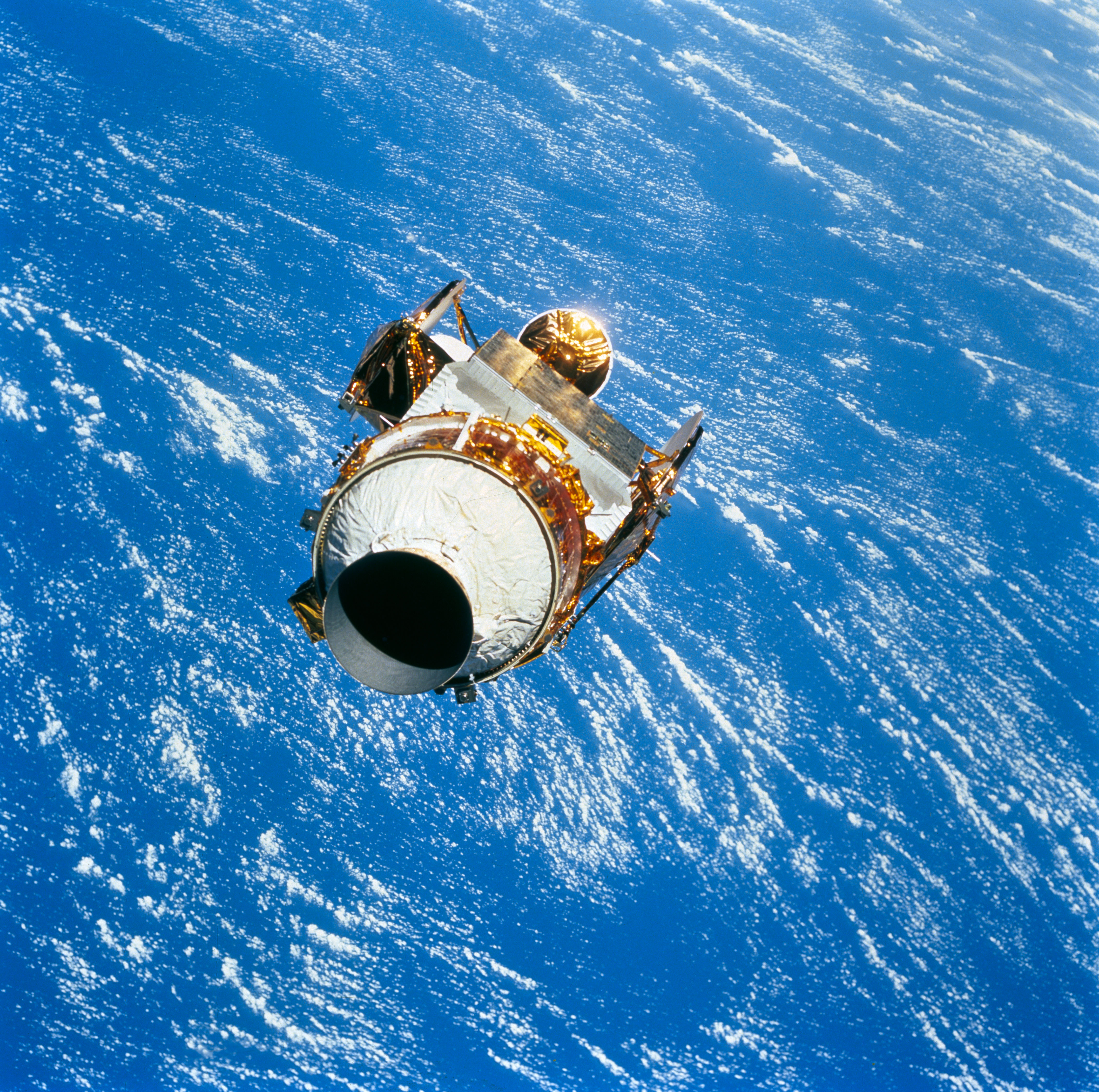Transfer Orbit Stage on:
[Wikipedia]
[Google]
[Amazon]

 The Transfer Orbit Stage (TOS) was an
The Transfer Orbit Stage (TOS) was an

 The Transfer Orbit Stage (TOS) was an
The Transfer Orbit Stage (TOS) was an upper stage
A multistage rocket or step rocket is a launch vehicle that uses two or more rocket ''stages'', each of which contains its own engines and propellant. A ''tandem'' or ''serial'' stage is mounted on top of another stage; a ''parallel'' stage is ...
developed by Martin Marietta
The Martin Marietta Corporation was an American company founded in 1961 through the merger of Glenn L. Martin Company and American-Marietta Corporation. In 1995, it merged with Lockheed Corporation to form Lockheed Martin.
History
Martin Mari ...
for Orbital Sciences Corporation
Orbital Sciences Corporation (commonly referred to as Orbital) was an American company specializing in the design, manufacture, and launch of small- and medium- class space and launch vehicle systems for commercial, military and other governmen ...
during the late 1980s and early 1990s. The TOS was designed to be a lower-cost alternative to Inertial Upper Stage
The Inertial Upper Stage (IUS), originally designated the Interim Upper Stage, was a two-stage, solid-fueled space launch system developed by Boeing for the United States Air Force beginning in 1976 for raising payloads from low Earth orbit to h ...
and Centaur G upper stages. The TOS was designed to be deployed by the Titan 34D
The Titan 34D was a United States expendable launch vehicle used to launch a number of satellites for military applications.
Service history
Derived from the Titan III, the Titan 34D featured Stage 1 and Stage 2 stretched with more powerful U ...
, Commercial Titan III
The Commercial Titan III, also known as CT-3 or CT-III, was an American expendable launch system, developed by Martin Marietta during the late 1980s and flown four times during the early 1990s. It was derived from the Titan 34D, and was original ...
and Space Shuttle
The Space Shuttle is a retired, partially reusable low Earth orbital spacecraft system operated from 1981 to 2011 by the U.S. National Aeronautics and Space Administration (NASA) as part of the Space Shuttle program. Its official program na ...
.
The main propulsion system of the Transfer Orbit Stage was an Orbus 21
Orbus may refer to:
* ''Orbus'' (novel), 2009, by Neal Asher
*Orbus, a French radio network
*Orbus-21S, the Intelsat 603
Intelsat 603 or IS-603, previously named Intelsat VI F-3, is a communications satellite operated by Intelsat. Launched in 1 ...
solid rocket motor
A solid-propellant rocket or solid rocket is a rocket with a rocket engine that uses solid propellants (fuel/oxidizer). The earliest rockets were solid-fuel rockets powered by gunpowder; they were used in warfare by the Arabs, Chinese, Persians ...
. Attitude control was provided by hydrazine thrusters. The inertial guidance
An inertial navigation system (INS) is a navigation device that uses motion sensors (accelerometers), rotation sensors ( gyroscopes) and a computer to continuously calculate by dead reckoning the position, the orientation, and the velocity (dire ...
system used a ring laser gyroscope
A ring laser gyroscope (RLG) consists of a ring laser having two independent counter-propagating resonant modes over the same path; the difference in phase is used to detect rotation. It operates on the principle of the Sagnac effect which shifts ...
produced by Honeywell
Honeywell International Inc. is an American publicly traded, multinational conglomerate corporation headquartered in Charlotte, North Carolina. It primarily operates in four areas of business: aerospace, building technologies, performance ma ...
. Its control system employed a digital optimal, time-scheduled control algorithm to provide stability whilst the Orbus 21 was burning, while a phase-plane controller was used to manage its reaction-control system.
Only two Transfer Orbit Stages were launched. The first was launched on 25 September 1992, aboard a Commercial Titan III with the Mars Observer
The ''Mars Observer'' spacecraft, also known as the ''Mars Geoscience/Climatology Orbiter'', was a robotic space probe launched by NASA on September 25, 1992, to study the Martian surface, atmosphere, climate and magnetic field. During the inte ...
spacecraft bound for Mars
Mars is the fourth planet from the Sun and the second-smallest planet in the Solar System, only being larger than Mercury (planet), Mercury. In the English language, Mars is named for the Mars (mythology), Roman god of war. Mars is a terr ...
. Despite a successful launch, the Mars Observer spacecraft later malfunctioned. The second use of a TOS was the deployment of the Advanced Communications Technology Satellite
STS-51 was a NASA Space Shuttle ''Discovery'' mission that launched the Advanced Communications Technology Satellite (ACTS) in September 1993. The flight also featured the deployment and retrieval of the SPAS-ORFEUS satellite and its IMAX cam ...
from on mission STS-51
STS-51 was a NASA Space Shuttle ''Discovery'' mission that launched the Advanced Communications Technology Satellite (ACTS) in September 1993. The flight also featured the deployment and retrieval of the SPAS-ORFEUS satellite and its IMAX cam ...
. This was also successful.
The Transfer Orbit Stage was designed to separate from the Space Shuttle
The Space Shuttle is a retired, partially reusable low Earth orbital spacecraft system operated from 1981 to 2011 by the U.S. National Aeronautics and Space Administration (NASA) as part of the Space Shuttle program. Its official program na ...
via pyrotechnic devices enclosed in a frangible metal joint known as a Super*Zip. On STS-51, the primary and backup pyrotechnic devices inside the Super*Zip were erroneously fired simultaneously, resulting in minor damage to both the TOS, and the Shuttle's payload bay lining. However, the ACTS satellite deployed successfully and functioned normally on orbit. The Shuttle landed safely despite the anomaly.
References
* {{Upper stages Rocket stages